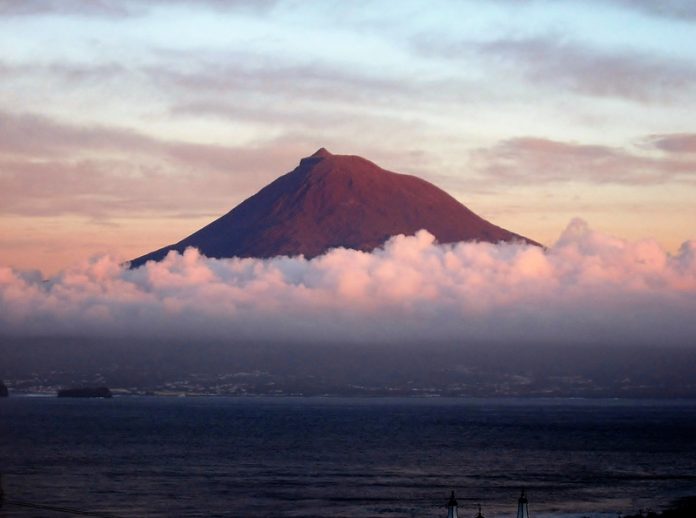Taking advantage of the power of the Earth interior
Prof. Joan Martí is the leader of the Group of Volcanology at the Institute of Earth Sciences Jaume Almera, CSIC, of Barcelona, Spain. The research of his group addresses different aspects of the volcanological science, including dynamics of volcanic systems, hazard assessment and characterisation of volcanogenic geothermal and mineral resources. His work on 3D modelisation aims at improving the imaging of the interior of volcanic systems, thus helping to understand their behaviour and the distribution of geothermal reservoirs, as a way to define better exploration and exploitations guidelines.
Volcanos are one of the most evident manifestations of the Earth’s energy. Volcanic eruptions are fascinating natural phenomena, which have attracted the curiosity of humans since the earliest times. Volcanos have created spectacular landscapes that today attract millions of visitors from around the world. However, volcanic eruptions may have significant impacts on society and the environment, showing us the worst face of the Earth’s power. However, this same power may also show a very different side when we consider its role in creating the Earth’s atmosphere, allowing life to develop on our planet, and the important energy and mineral resources associated with volcanoes.
Volcanoes are the main source of geothermal energy. Compared to the normal geothermal gradient of about 25°C per km of depth in most of the world, when magma (i.e. molten rock generated at the Earth’s interior) enters the crust, for example, as a shallow intrusion beneath a volcano, this normal gradient is perturbed locally as temperature rises around the intrusion. The extent and duration of such a thermal anomaly depend mostly on the temperature and volume of the intruded melt. The presence of hot magmas below the surface of active volcanic regions offers the prospect of harnessing a huge amount of geothermal energy. The geothermal energy is a renewable resource, as it exploits the abundant Earth’s interior heat and water, which once used and cooled, is then piped back to the reservoir. Having the use of this natural energy source has important implications for preserving the environment.
The economic and energy crisis that today affects modern society pushes us to look for cleaner and more sustainable energy sources, among which geothermal energy occupies a prominent place. Geothermal energy associated with volcanoes is of much higher enthalpy (i.e. energetically efficient) than other sources such as tectonic or the geothermal gradient itself, so it offers a much better option where available. However, there are some questions we should ask ourselves to ensure that geothermal energy is a suitable and recommendable alternative to the hydrocarbons derived from other renewable energies.
Where does geothermal energy originate? What does it take for a geothermal deposit to be economical?
How do we estimate reserves? How can we recover this thermal energy, and how can we use it in practice? Are there any adverse effects for the environment as geothermal energy is tapped and recovered, in particular in comparison with other types of energy? How can we discover that an important geothermal reservoir is nearby? Answering these questions requires us to conduct detailed research on the volcanic systems that host the geothermal reservoirs, in order to establish correct exploration and exploitation strategies. Otherwise, the lack of knowledge on the characteristic of a geothermal reservoir and of its container, as well as on the causes that it originated from, may conduct to extremely expensive and unproductive strategies. It is necessary to improve and standardise the geophysical, geological and geochemical technologies needed to characterise and monitor enhanced geothermal systems in order to minimise the exploration and exploitation costs by reducing the drilling uncertainties. A better characterisation of the reservoirs should result in reducing the amount of drilling required to set up a new geothermal power plant. Geological, geophysical and geochemical information on the volcanic systems and their hosted geothermal reservoirs must be combined to obtain realistic and reliable 3D simulation and visualisation models that should help to improve the efficiency of exploration and exploitation strategies significantly reducing their costs.
Europe was pioneering in the exploration and exploitation of geothermal energy with the experience of the Larderello, Italy, in 1904 where geothermal steam was harnessed to generate electricity. Other projects have been developed later in Italy and in other European sites to exploit geothermal energy. The most successful being Iceland, where more than 26.5% of the nation’s energy is geothermal, as well as nearly 87% of home heating and hot water requirements of the country. The European leadership in this field should be promoted by improving exploration strategies, making them more effective and costless, to help make geothermal energy accessible less favourable regions, which are located in active volcanic areas, thus contributing to improve the sustainability of our planet. In fact, several countries in Latin America (México, Costa Rica, El Salvador, Guatemala, Nicaragua, Chile), Asia (Indonesia, Philippines, South Korea, Thailand, Japan), or Africa (Kenya, and Ethiopia) have already opted for the use of this type of renewal energy. Clearly, the use of geothermal energy is an important investment in the future in which Europe cannot be excluded.
Professor Joan Martí
Professor of Research
Spanish Research Council (CSIC)
Group of Volcanology of Barcelona
joan.marti@ictja.csic.es











